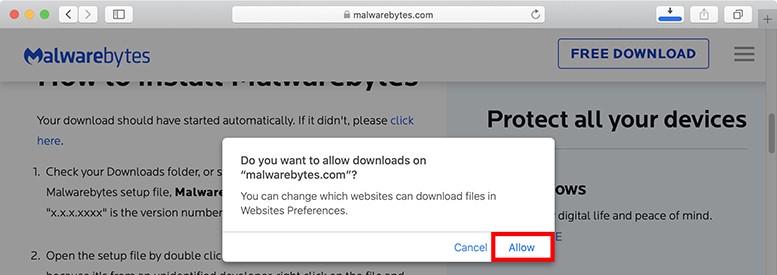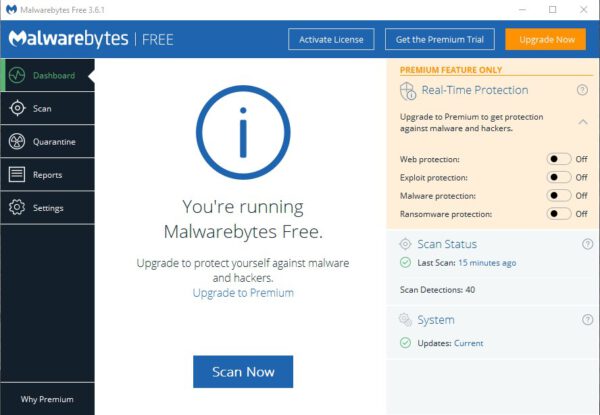

- #SHOULD I REMOVE MALWAREBYTES FROM MAC HOW TO#
- #SHOULD I REMOVE MALWAREBYTES FROM MAC SOFTWARE#
- #SHOULD I REMOVE MALWAREBYTES FROM MAC MAC#
Its Malware Removal module offers real-time protection from malware and virus threats. Done!Ĭertainly the most efficient way to find and remove malware is using the Apple notarized app, CleanMyMac X. Select the Wi-Fi icon from the top menu bar and toggle your Wi-Fi off. Disconnecting from the internet will immediately stop malware from stealing data, giving you time to spot and remove suspicious software. The majority of malware uses the internet connection to easily transfer data into a hacker's hands. If you suspect malware, the first step is to disconnect from the internet immediately.

#SHOULD I REMOVE MALWAREBYTES FROM MAC MAC#
Introducing my seven fail-proof Mac virus removal tips to help you safely remove malware from your device.
#SHOULD I REMOVE MALWAREBYTES FROM MAC HOW TO#
How to remove viruses and malware from your Mac? Have you found something that looks like a virus in Activity Monitor? Then head to the next section to learn how to get rid of malware on your Mac. Now select the CPU tab from the top and look for unrecognized high CPU programs. Open Finder, select Applications > Utilities > Activity Monitor.
#SHOULD I REMOVE MALWAREBYTES FROM MAC SOFTWARE#
Use it to detect suspicious software on your Mac. This Apple's built-in tool shows all Mac operations in real-time, including the background processes. You notice new plugins installed in your browser.Īnother option is to uncover malware on your Mac is to use Activity Monitor. Your search engine homepage is different. You’re missing or are not able to open files and folders. Your Mac becomes very slow for no reason. Here are the common signs of a malware attack: Watch out! Any sudden unusual behavior is the first red flag. So when it comes to detecting malware, it's not always that straightforward. There are also ones that are simply byproducts of a virus. While some bring chaos and disruption, others silently steal information. How to spot malware on your Mac?Īs a rule, aggressive Malware comes in all shapes and sizes depending on the end goal it was created to attain. But before we get into more details, let’s determine telltale signs of Mac malware infection.

On the other hand, a virus is just one specific type of malware.Īlthough Macs aren't bulletproof, there have been many noticeable improvements when it comes to Mac malware removal. It can include stealing sensitive information, tracking keystrokes, unauthorized network access, or geo-locations. Is there a difference between malware and viruses? Since we often hear these two terms used interchangeably, what is what becomes confusing.Įssentially, malware is an umbrella term for any kind of malicious software that performs unauthorized tasks on your device. Knowing how to secure your Mac, spot the signs of a malware infection, and how to get rid of malware on a Mac is essential to keep your Mac as good as new. XCode Spy - Software developer-focused malware that can steal files, passwords, folders, and location details. Silver Sparrow - M1 compatible malware detected on over 30,000 devices last year.ĮlectroRat - Remote Access Tool that steals data from cryptocurrency wallets.

But over the last 12 months, despite Apple's best efforts, we're witnessing new malware threats finding their way into our Mac devices, even those with the new M1 Chips. In 2020, Malwarebytes reported a 38% decrease in macOS malware. So for all Mac users, the best strategy is early Mac malware prevention instead of fixing the infected Mac. For those who still think that Mac’s systems are flawless, it’s time to face the truth - Macs can get infected with malware or other nasty viruses just like any other device.


 0 kommentar(er)
0 kommentar(er)
